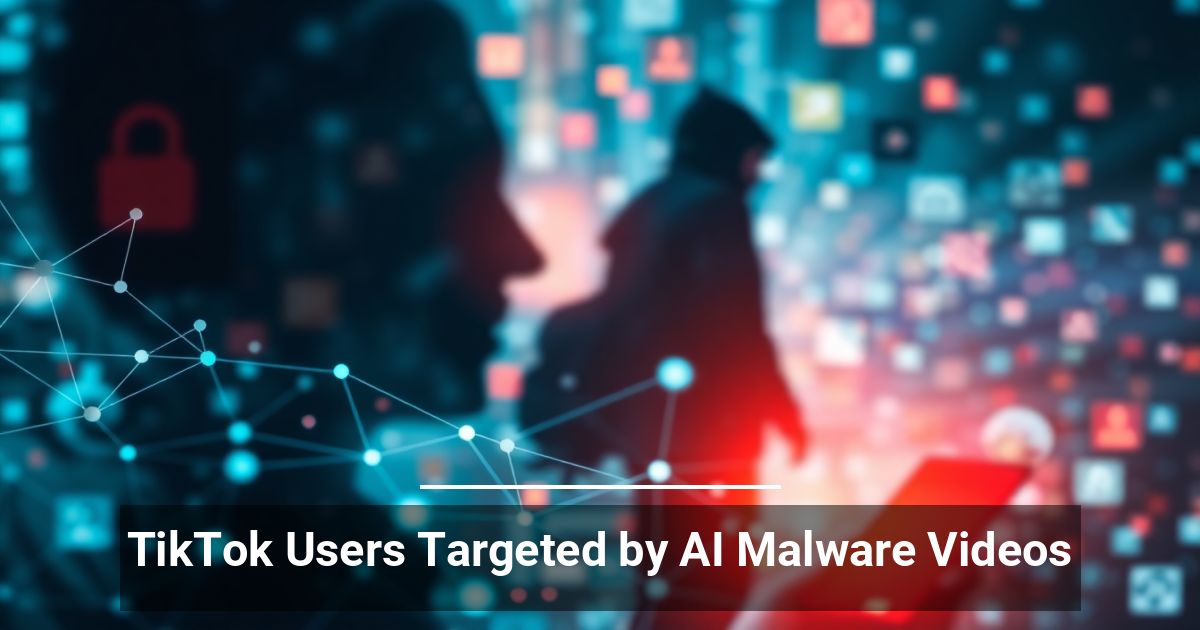 Have you considered how social media trends could impact your establishment’s cybersecurity? TikTok has recently become a hotspot for AI malware disguised as helpful content, catching many users off guard.
Have you considered how social media trends could impact your establishment’s cybersecurity? TikTok has recently become a hotspot for AI malware disguised as helpful content, catching many users off guard.
It’s time for business owners to rethink how employees engage with these platforms. Learn more about it here.
Hackers Leverage Popular Platforms for Malware Distribution
Whenever we hit a snag or something breaks, we tend to rush online for a quick fix through how-to videos and guides. It’s fast, convenient, and a complete lifesaver — until it’s not.
Trend Micro, an American-Japanese cybersecurity firm, discovered the latest wave of digital attacks predominantly targeting TikTok users. Here’s how threat actors are sneaking malicious software onto devices:
- Setting the trap: Cybercriminals create TikTok accounts and use AI to generate spoken content rapidly. They’re mainly clips telling you how to activate the premium versions of Windows, Microsoft Office, or Spotify for free.
- Video enters user feeds: TikTok’s algorithmic reach raises the likelihood of widespread exposure, with one clip reaching more than half a million views, 20,000 likes, and 100 comments.
- Victims take the bait: Gone are the days when cybercriminals relied solely on brute force tactics. Someone follows the video’s instructions, clicks a suspicious link, and unknowingly downloads automated payload delivery tools themselves.
- Devices become compromised: The malware is usually an infostealer that sweeps the system for login details and payment information. Some threat actors use adaptive ransomware to lock users out of their own files and demand hefty payments for decryption.
How Can Organizations Stay Ahead of Social Engineering Tactics?
AI malware and AI-driven attacks will only become more commonplace from here. Whether you manage a small startup or an established corporation, staying ahead requires a mix of the following tactics:
Implement Awareness Programs
Educated, alert staff are your strongest line of defense against targeted attacks. Train them to recognize modern threats, including:
- Deepfake phishing emails or voice messages that mimic executives and team leaders
- Requests for sensitive information that appeal to emotions like fear or urgency
- Intelligent trojans that can disguise themselves as legitimate files
- Types of links and attachments to avoid
Enable Strong Spam Filters
Why not stop threats in their tracks before your team has a chance to interact with them? For example, you can authenticate inbound emails with the following technologies:
- Sender Policy Framework
- Domain Message Authentication Reporting and Conformance
- DomainKeys Identified Mail
Take the time to configure firewalls to block access to known harmful IP addresses, too.
Invest in Antimalware Programs
Aside from regularly updating your operating systems and software, it never hurts to install reliable antimalware tools. They detect potential threats early, quarantine malicious files, and provide peace of mind for your team.
Protecting Your Digital Assets
Staying proactive is key to cybersecurity. Don’t wait for threats to strike; address risks now. Shield your business from emerging dangers like AI malware and machine learning evasion to safeguard the trust your brand thrives on.


